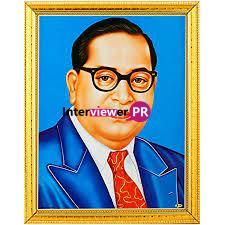Bhimrao Ramji Ambedkar, (born April 14, 1891, Mhow, India—died December 6, 1956, New Delhi), leader of the Dalits (Scheduled Castes; formerly called untouchables) and law minister of the government of India (1947–51).
Born of a Dalit Mahar family of western India, he was as a boy humiliated by his high-caste schoolfellows. His father was an officer in the Indian army. Awarded a scholarship by the Gaekwar (ruler) of Baroda (now Vadodara), he studied at universities in the United States, Britain, and Germany. He entered the Baroda Public Service at the Gaekwar’s request. But, again ill-treated by his high-caste colleagues, he turned to legal practice and to teaching. He soon established his leadership among Dalits, founded several journals on their behalf, and succeeded. In obtaining special representation for them in the legislative councils of the government. Contesting Mahatma Gandhi’s claim to speak for Dalits (or Harijans, as Gandhi called them). He wrote What Congress and Gandhi Have Done to the Untouchables (1945).
In 1947 Ambedkar became the law minister of the government of India. He took a leading part in the framing of the Indian constitution, outlawing discrimination against untouchables, and skillfully helped to steer it through the assembly. He resigned in 1951, disappointed at his lack of influence in the government. In October 1956, in despair because of the perpetuation of untouchability in Hindu doctrine. He renounced Hinduism and became a Buddhist, together with about 200,000 fellow Dalits, at a ceremony in Nagpur. Ambedkar’s book The Buddha and His Dhamma appeared posthumously in 1957. And it was republished as The Buddha and His Dhamma: A Critical Edition in 2011, edited, introduced. And annotated by Aakash Singh Rathore and Ajay Verma.
Despite his lowly caste, Ambedkar’s father had become an officer in the Indian Army and was able to insist that his sons should be educated so Ambedkar was allowed to attend school. At that time teachers were often reluctant to engage with Dalit children, often refusing to mark their exams. Ambedkar was the first in his community to graduate High School and went on to study for a BA in Economics and Politics at Bombay University, where he met Sayaji Rao III, the Maharajah of the princely state of Baroda.
- Advertisement -
The Maharajah was an active advocate of social reforms, including the removal of untouchability. He sponsored Ambedkar’s further education abroad. First at Columbia University in New York where he completed a Masters and a PhD, and later at LSE. During this period Ambedkar studied economics, history and political science. And wrote on a wide range of topics, including the history of caste in India. There is also evidence in his letters at this time of his belief in education as a path to progress With a particular emphasis on female education.
Although he was critical of British colonial government. Ambedkar was often at odds with Congress and the nationalist movement, predominantly because they clashed over how to address the issue of Untouchability. In 1932 British Prime Minister Ramsay Macdonald granted the Communal Award to provide for separate electorates for minorities, including Untouchables.
But Gandhi was adamant that he could not accept such a split in the Hindu vote and began a fast until death, forcing Ambedkar to backtrack and agree to joint electorates. Throughout the 1930s the relationship between the two became increasingly fractious: Ambedkar saw Gandhi’s attempt to persuade Hindus to reform, rather than reject, the caste system as ineffectual and a barrier to Dalit political rights. In the late 1930s, Gandhi and Ambedkar exchanged terse correspondence highlighting their differences ( for example, Appendix I and II of The Annihilation of Caste), and in the 1940s Ambedkar penned two texts criticising Congress and Gandhi and charging them with gross hypocrisy.
Despite Ambedkar’s differences with Congress, when India became independent in August 1947. Prime Minister Nehru invited him to be the first Minister of Law and Justice. Shortly after, the Constituent Assembly appointed Ambedkar as Chair of the Drafting Committee for the new Constitution. Although specialized sub-committees drafted the primary texts. Ambedkar’s position meant he played a vital role in editing and clarifying the content (particularly as the other members of Drafting Committee were absent for most of the process).
Christophe Jaffrelot, in his book Dr Ambedkar and the Untouchables, highlights Ambedkar’s commitment and close attention to detail: not only would he edit the articles, he would also attend the Constituent Assembly debates to defend certain formulations and to guide the discussion (pp.107-8). Ambedkar’s influence can be seen in many aspects of the resulting Indian Constitution such as the strong emphasis on liberal democracy, the federal structure, and the provisions and safeguards for minorities alongside the emphatic abolition of Untouchability.
The Constitution was promulgated on 26 January 1950. Ambedkar appreciated that it had its limitations and declared that political democracy could have no meaning without social democracy. Indeed, it was the refusal of Congress to agree to a uniform civil code that would have been socially progressive. For example in advancing gender equality. But would have restricted the ability of Hindus and Muslims to practice personal religious laws. That led Ambedkar to resign from his position as Minister of Law and Justice in 1951.
However, he remained confident that the new Constitution represented. A solid foundation for India to build from as a new independent nation. c.f. D. Keer Dr Ambedkar: Life and Mission.


